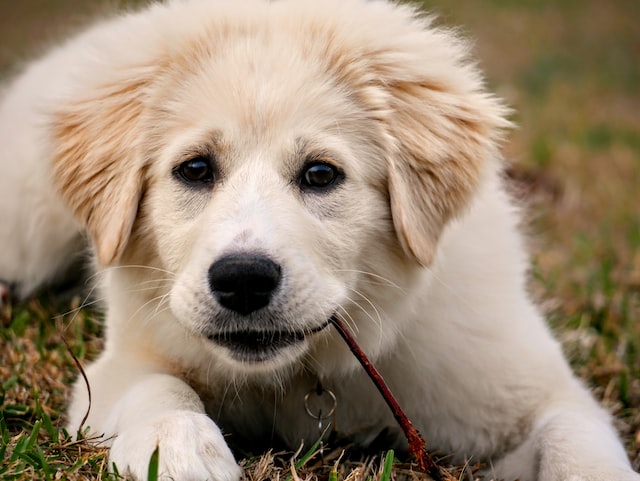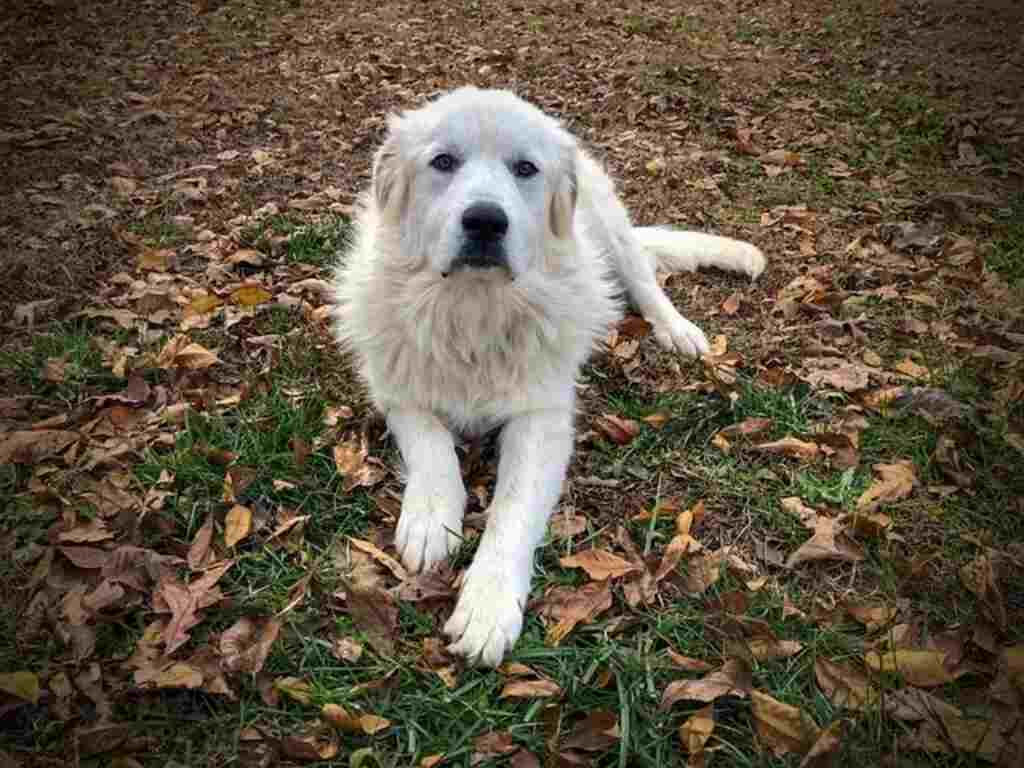So you’re thinking about adding a Great Pyrenees to your pack, but you’ve already got a little furball running around? Smart thinking to research this first – because let’s be honest, nobody wants their Chihuahua becoming an accidental chew toy for a 100-pound fluffball.
The big question most people have is: are Great Pyrenees good with small dogs? The short answer? They absolutely can be, but it’s not a guarantee. These gentle giants have the potential to be amazing companions for smaller breeds, but success depends on proper introduction, early socialization, and understanding what makes these magnificent dogs tick.
Understanding the Great Pyrenees Temperament
The Guardian Instinct
Great Pyrenees were bred to protect livestock, which means they’ve got guardian instincts hardwired into their DNA. This actually works in your favor when it comes to small dogs. Once a Pyr accepts your tiny companion as part of their “flock,” they’ll protect that little guy with their life.
I’ve seen Great Pyrenees who treat small dogs like precious puppies – gently nudging them away from danger and standing guard while they sleep. It’s honestly heartwarming to watch a 120-pound dog carefully step around a 5-pound Yorkie 🙂
Independent Yet Gentle Nature
These dogs are famously independent thinkers. They won’t blindly follow commands like a Golden Retriever might, but this independence comes with a surprising gentleness. Great Pyrenees typically have excellent bite inhibition and an innate understanding of their size advantage.
That said, their independent streak means you can’t just assume everything will work out. You need to actively manage the relationship, especially during the introduction phase.
Size Differences and Safety Considerations
The Reality Check
Let’s address the elephant in the room – or should I say the Great Pyrenees in the room? We’re talking about dogs that can weigh anywhere from 85 to 160 pounds meeting dogs that might weigh 5 to 20 pounds. The size difference alone requires careful management.
Even the gentlest giant can accidentally hurt a small dog during play. I once watched a well-meaning Pyr accidentally bowl over a Jack Russell Terrier just by trying to initiate play. No malicious intent, but the little guy went tumbling anyway.
Managing Physical Interactions
Here’s where you become the referee:
- Supervise initial interactions until you’re 100% confident in their dynamic
- Create safe spaces where your small dog can retreat if needed
- Watch for signs of resource guarding around food, toys, or favorite humans
- Be mindful during high-energy moments when accidents are more likely to happen
Socialization: The Make-or-Break Factor
Early Exposure Makes All the Difference
Want to know the secret sauce for success? Early socialization with small dogs is absolutely crucial. Great Pyrenees puppies who grow up around small breeds typically develop better size awareness and gentler play styles.
If you’re adopting an adult Pyr who hasn’t been around small dogs, don’t panic. It just means you’ll need to take things slower and be more intentional about the process.
Reading the Signs
Great Pyrenees communicate differently than many breeds. They’re not big tail-waggers or obvious emotion-displayers. You need to learn their subtle cues:
- Relaxed body language with loose, flowing movements
- Play bows that acknowledge size differences
- Gentle mouthing rather than rough play
- Respect for the small dog’s space when they signal they’ve had enough

Introducing Your Great Pyrenees to Small Dogs
The Gradual Approach
Ever tried introducing two people who you just know will either love each other or want to strangle each other? Same energy here. Take it slow and controlled.
Start with parallel walks where both dogs can see and smell each other without direct interaction. Keep sessions short and positive. FYI, this isn’t a race – some pairs click immediately, others need weeks to warm up.
Controlled Meet-and-Greets
When you’re ready for face-to-face introductions:
- Choose neutral territory (not your home initially)
- Keep both dogs on loose leashes
- Have a helper to manage one dog while you handle the other
- Watch for stress signals from either dog
- Keep sessions brief and positive
Home Territory Considerations
Your house is where things get interesting. Great Pyrenees are naturally territorial, and small dogs can be surprisingly bossy about their space. Set clear boundaries from day one.
Create separate feeding areas, provide multiple water stations, and ensure your small dog has elevated spaces they can access but your Pyr cannot. Think of it as diplomatic immunity for the little guy.
Common Challenges and Solutions
The Prey Drive Question
Here’s something people worry about unnecessarily – Great Pyrenees typically have low prey drive. They were bred to protect small animals, not chase them. However, fast-moving small dogs might trigger chase instincts in some individuals.
If your small dog is a runner or has a high-pitched bark, pay extra attention during the adjustment period. Most Pyrs learn to differentiate between “small family member” and “small thing to chase,” but it takes time.
Jealousy and Resource Competition
Let’s be real – dogs get jealous. Your Great Pyrenees might not appreciate sharing your attention with a small, arguably cuter competitor. Manage resources carefully:
- Feed them in separate areas
- Provide individual toys and beds
- Give each dog one-on-one attention daily
- Don’t let the small dog claim all the prime real estate (like your lap)
Play Style Mismatches
Great Pyrenees play differently than most breeds. They’re not typically high-energy players, preferring calmer interactions. Small dogs, especially terriers, might find this boring or might try to provoke more energetic play.
Teaching appropriate play styles benefits both dogs. Reward gentle interactions and redirect when play gets too intense.
Success Stories and Real-World Examples
My Neighbor’s Unlikely Duo
I’ll never forget watching my neighbor’s Great Pyrenees, Bruno, with their tiny Maltese, Princess. Bruno would lie down to get closer to Princess’s level for play, and when she got tired, he’d position himself so she could use his fluffy side as a pillow. Honestly, it was like watching a Disney movie :/
The Foster Family Phenomenon
Many Great Pyrenees make excellent “foster parents” for small dogs. Their protective instincts and gentle nature create a perfect environment for nervous or recovering small breeds. Several rescue organizations specifically pair Pyrs with small dogs who need confidence building.
Breed-Specific Considerations for Small Dogs
High-Energy Small Breeds
Jack Russell Terriers, Chihuahuas, and similar high-energy breeds might initially frustrate a laid-back Great Pyrenees. These dogs need to learn that not every dog wants to play chase or engage in high-intensity games.
Calmer Small Breeds
Cavalier King Charles Spaniels, Pugs, and similar gentle breeds often pair beautifully with Great Pyrenees. Their temperaments complement each other naturally.
Senior Small Dogs
Great Pyrenees often show remarkable gentleness with older dogs. If your small dog is senior, a Pyr might actually provide comfort and protection during their golden years.
Long-Term Relationship Management
Maintaining Harmony
Successfully pairing these breeds isn’t a “set it and forget it” situation. Ongoing management ensures long-term success:
- Regular training reinforcement for both dogs
- Continued socialization opportunities
- Health monitoring (large breeds can develop issues that affect temperament)
- Adjusting management as dogs age
Signs of a Successful Partnership
You’ll know things are working when:
- Your Great Pyrenees positions themselves protectively near the small dog
- Both dogs seek each other out for companionship
- Play sessions are gentle and appropriate
- Your small dog shows confidence around the Pyr
- Stress signals decrease over time

When It Might Not Work Out
Red Flags to Watch For
Sometimes, despite your best efforts, it just doesn’t click. Persistent aggression, excessive stress, or inability to coexist peacefully means you need professional help or might need to reconsider the pairing.
Don’t feel guilty if it doesn’t work out. Some dogs simply aren’t compatible, regardless of breed or size.
Professional Help
Certified dog trainers or animal behaviorists can work wonders with challenging pairings. If you’re struggling, getting professional guidance early can save everyone stress and potentially save the relationship.
The Bottom Line
Great Pyrenees can be absolutely wonderful with small dogs when properly introduced and managed. Their protective instincts, gentle nature, and low prey drive make them surprisingly good candidates for multi-dog households with size disparities.
The key is understanding that success requires effort, patience, and realistic expectations. You’re not just throwing two dogs together and hoping for the best – you’re carefully orchestrating a relationship that can bring years of joy to your household.
IMO, there’s something magical about watching a gentle giant care for a tiny companion. It challenges everything people assume about big dogs and proves that the best relationships often come in the most unexpected packages.
So go ahead, take that leap. With proper preparation and management, your Great Pyrenees and small dog might just become the best of friends – or at the very least, peaceful roommates who occasionally share the same sunny spot on the living room floor.
Related Post: Are Alaskan Malamutes Good With Small Dogs? (Detailed!)


